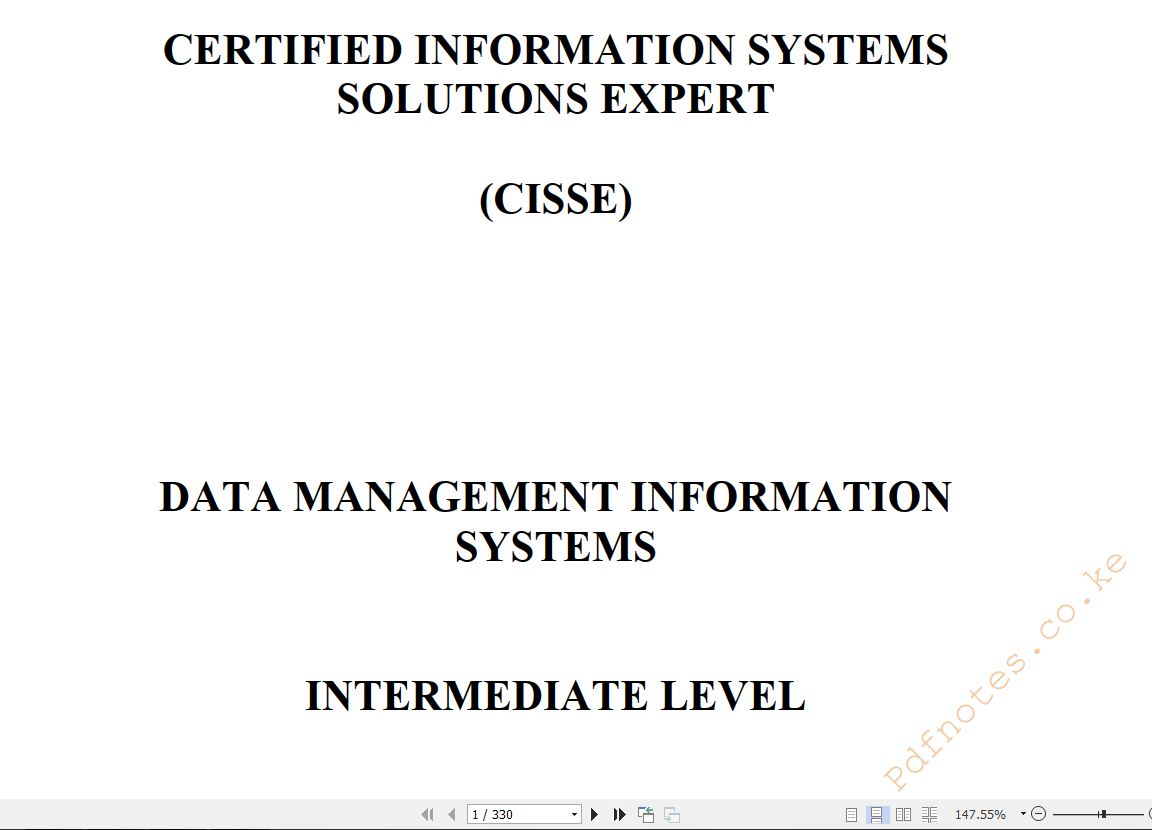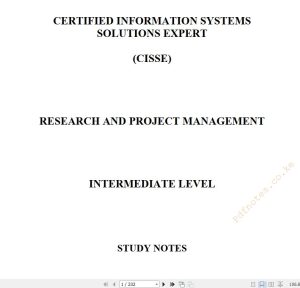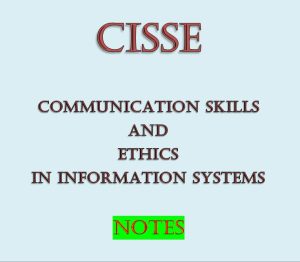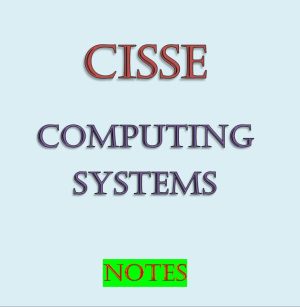Original price was: KSh900.KSh799Current price is: KSh799.
TOPICS COVERED:
Chapter 1: Introduction to Data Management Information Systems
Chapter 2: Introduction to Management Information Systems
Chapter 3: Data Management
Chapter 4: Database and Entity-Relationship Model
Chapter 5: Relational Database
Chapter 6: Structured Query Language (SQL)
Chapter 7: Database Storage and Querying
Chapter 8: Transaction Processing
Chapter 9: Data Integration
Chapter 10: Object-based databases and Extensible Mark-up Language (XML)
Chapter 11: Online Transactions Processing (OLTP), Online Analytical Processing (OLAP) and Data Warehousing
Chapter 12: Data Mining for Business Intelligence
Chapter 13: Business processes, Innovations and process re-engineering
Chapter 14: Emerging issues in Data Management Information Systems
Description
DATA MANAGEMENT INFORMATION SYSTEMS
UNIT DESCRIPTION
This paper is intended to equip the candidate with the knowledge, skills and attitude that will enable him/her to oversee and control data management information systems and provide technical details to manage and implement organisational databases.
LEARNING OUTCOMES
A candidate who completes this paper should be able to:
• and implements Database Management Systems
• Develop entity-relationship diagrams, relational schemas, and data dictionaries for a database using a given set of business rules
• Analyse Data Management Systems
• Investigate new technologies that are transforming businesses in data management information systems
• Determine the necessary application in an Enterprise Setup
CONTENT
1. Introduction to Data Management Information Systems
1.1 Overview of data management and information systems
1.2 Data, Information, Knowledge and Wisdom (DIKW) pyramid
1.3 Functions of MIS
1.4 Database systems applications
1.5 Type of databases
1.6 DBMS architecture
1.7 Components of a DBMS
1.8 Facilities of a DBMS
2. Introduction to Management Information Systems
2.1 Elements of information systems
2.2 Characteristics of valuable information
2.3 Types of Information Systems
2.4 Business process and functions
2.5 Concepts and types of information systems
2.6 Elements of Information systems
2.7 Categories of information system
3. Data Management
3.1 Introduction to Data Management
3.2 Hierarchy of data and data types
3.3 Data organization techniques
3.4 Software Process models
4. Database and Entity-Relationship Model
4.1 Overview of database design process
4.2 Entity-Relationship (E-R) model
4.3 E-R diagrams
4.4 Relationships: One-to-one; one-to-many; many-to-many relationships
4.5 E-R design issues
4.6 Weak entity sets
4.7 Unified Modelling Language(UML)
4.8 Case Study Implementation
5. Relational Database
5.1 Set operations
5.2 Aggregate functions
5.3 Features of a good relational design
5.4 Atomic design and first normal form
5.5 Decomposition using functional dependence
5.6 Functional decomposition theory
5.7 Algorithms for decomposition
5.8 Case study implementation
6. Structured Query Language (SQL)
6.1 Overview of SQL
6.2 Basic structure of SQL queries
6.3 Null values
6.4 Nested sub-queries
6.5 SQL data types and Schema
6.6 Integrity constraints
6.7 Data Definition Language
6.8 Data Manipulation Language
6.9 Joins
6.10 Authentication in SQL
6.11 Case study implementation
7. Database Storage and Querying
7.1 Storage and file structure
7.2 Indexing and hashing
7.3 Query processing
7.4 Query optimization
7.5 Case study implementation
8. Transaction Processing
8.1 Transactions and atomicity, consistency, isolation, durability (ACID) Properties
8.2 Transaction types and states
8.3 Concurrent access, control and recovery
8.4 Serializability and concurrency control
8.5 Concurrency control and locking techniques
8.6 Locking algorithms
8.7 Recovery systems
9. Data Integration
9.1 Data integration approaches
9.2 Overview of the data warehouse
9.3 Data modelling for warehouses
9.4 Building a data warehouse
9.5 Types and functions of data warehouses
9.6 Challenges in implementing and managing data warehouses
9.7 Overview of data mining
9.8 Classification and clustering
9.9 Tools, techniques and applications of data mining
9.10 Virtual data integration
9.11 Case studies in Data Integration e.g. A Case Study on Model Driven Data
9.12 Integration for Data Centric Software Development
10. Object-based databases and Extensible Mark-up Language (XML)
10.1 Overview and complex types
10.2 Object–relational database management system (ORDBMS)
10.3 Structured types and inheritance in SQL
10.4 Overview, Structure of XML data
10.5 XML document schema
10.6 Querying and transformation
10.7 Application programming interface (API) to XML
10.8 XML data storage and XML Applications
11. Online Transactions Processing (OLTP), Online Analytical Processing (OLAP) and Data Warehousing
11.1 Overview of OLTP, OLAP and Data Warehouse
11.2 OLTP and OLAP difference
11.3 The role of OLAP in business intelligence
11.4 Overview of servers and data warehouse
11.5 Data warehouse characteristics and architecture
11.6 Multidimensional data model
11.7 Schemas of Multidimensional data models
11.8 Data Warehouse implementation
12. Data Mining for Business Intelligence
12.1 Overview of data mining concept
12.2 Knowledge Discovery in Databases (KDD) Process
12.3 Cross Industry Standard Process for Data Mining (CRISP-DM)
12.4 Key performance indicators (KPI) dashboards
12.5 Data Visualization
12.6 Case Study e.g. Implementing Business Intelligence System – A Case Study
13. Business processes, Innovations and process re-engineering
13.1 Overview of business process steps
13.2 Business processes documentation and management
13.3 Business process improvement
13.4 Business Process Management and International Organization for Standardization (ISO) Standards Alignment
13.5 Factors leading to innovations
13.6 Overview Business re-engineering and steps
13.7 Business Continuity Plan (BCP), objectives and phases
14. Emerging issues in Data Management Information Systems
14.1 Databases that bridge SQL/NoSQL
14.2 Databases in the cloud/Platform as a Service
14.3 Automated management
14.4 Automated management
14.5 In-memory databases
14.6 Big Data
14.7 Business intelligence:




